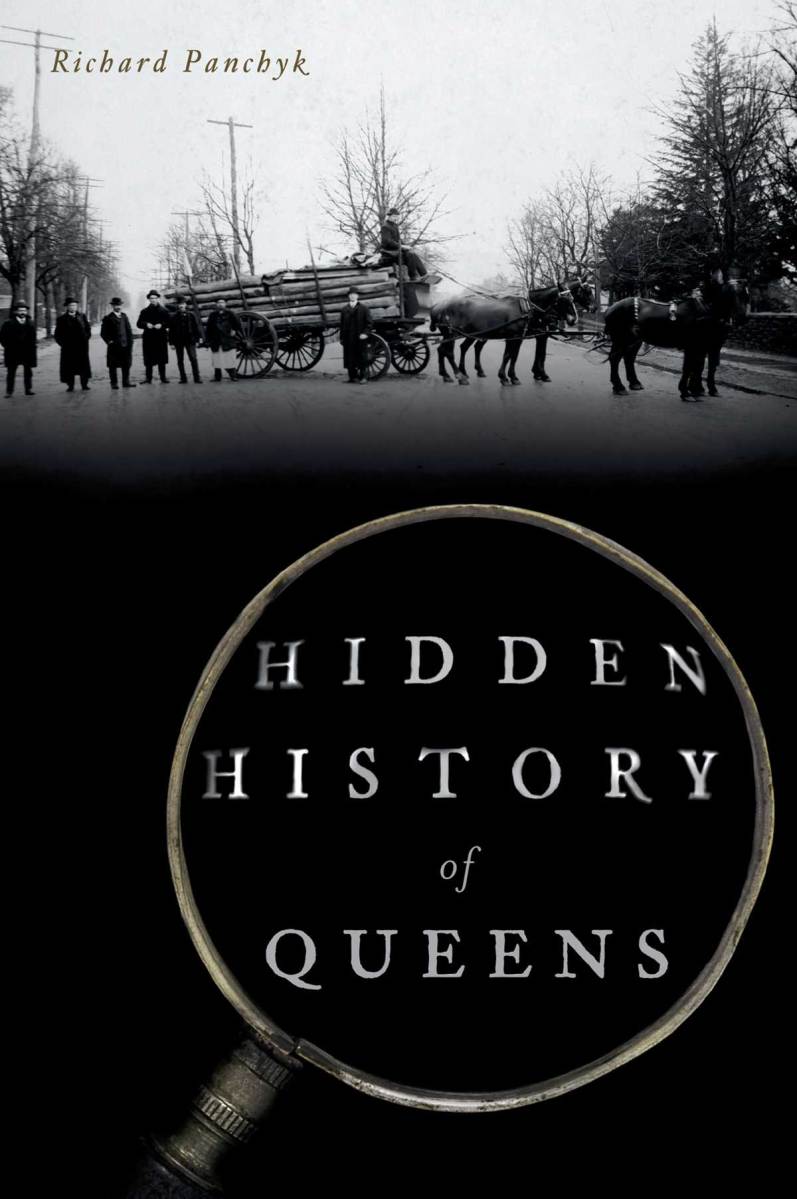By Merle Exit
Thousands of vehicles have gone past an old brick octagon building on the corner of Woodhaven Boulevard and Park Lane South. The people in those vehicles wonder what it is or whether it is part of Forest Park.
If you are able to get close enough to look near the top, the building reads “Fire Alarm Telegraph Station.”
Opened in November 1928, the station was built to serve as a command center that would receive fire calls from fire boxes in Queens. Although located in Forest Park, it is not owned or operated under the city Parks Department and still remains a command center.
That is just one of many sites in Richard Panchyk’s book, “Hidden History of Queens,” a well-written collection of Queens history — published by Arcadia Publishing and released July 30 — that doubles as a handy tourist guide.
Panchyk dedicated his publication to Grand Avenue in Elmhurst and Maspeth, which he refers to as “a corridor of such central importance in my life,” and “a celebration of the rich history of this diverse and wondrous borough.”
In the book’s opening chapter, “Apples and Creeks and Parks, Oh My,” he takes readers to Alley Pond Park, where a tree called Alley Pond Giant is located. It wasn’t Johnny Appleseed who dropped a few seeds in Newton where the Newtown Pippin apple tree first grew. As it turns out, there are no trees left near the Newtown Creek area — which straddles Queens and Brooklyn.
These fruit trees were recently planted at Maspeth Federal Savings, the Middle Village 75th Street Block Association’s community garden and at Ridgewood’s Onderdonk House.
The second chapter, “Queens at War,” will take you to two forts that still call Queens home: Fort Totten in Bayside and Fort Tilden in Breezy Point. Chapter three focuses on “Cars and Trains, Trolleys and Planes.” It brought back memories of when I was a young child living in the Queensbridge Housing Projects, close to the Queensboro Bridge, where I would hop aboard the trolley service from Queens to Manhattan. Although the book does not give the details, you can still see the remnants of the trolley stations that had elevators as well as an enclosed terminal opposite the entrance to the Roosevelt Island tram.
The fourth chapter, “Saved and the Lost,” is divided into sub-chapters, each with a different area of focus. Among the topics included are “The Bloom House Wilts; A Church Fit for a King; A Landmark with Five Lives (King Manor),” “The Legend of Bodine Castle,” “A Wrecked Church Finds New Life; A Tale of Two Town Halls,” and the “Tenement Masterpieces.”
“Famous Folks” is the subject of fifth chapter, where the author goes into a long description of Gov. DeWitt Clinton to represent the rich from Manhattan moving into Queens and the location of Clinton Hall in Maspeth. He focuses mostly on the historic names, but does mention such well known people in the entertainment world such as Tony Bennett, Paul Simon, and Louis Armstrong.
The final two chapters, “Last Traces of Hidden History” and “Final Resting Places” are great for history buffs to explore, particularly the small cemeteries.
I couldn’t help but notice what “Hidden History of Queens” lacked: the names of women, which is surprising considering the amount of women who played major parts in the borough’s history.



































